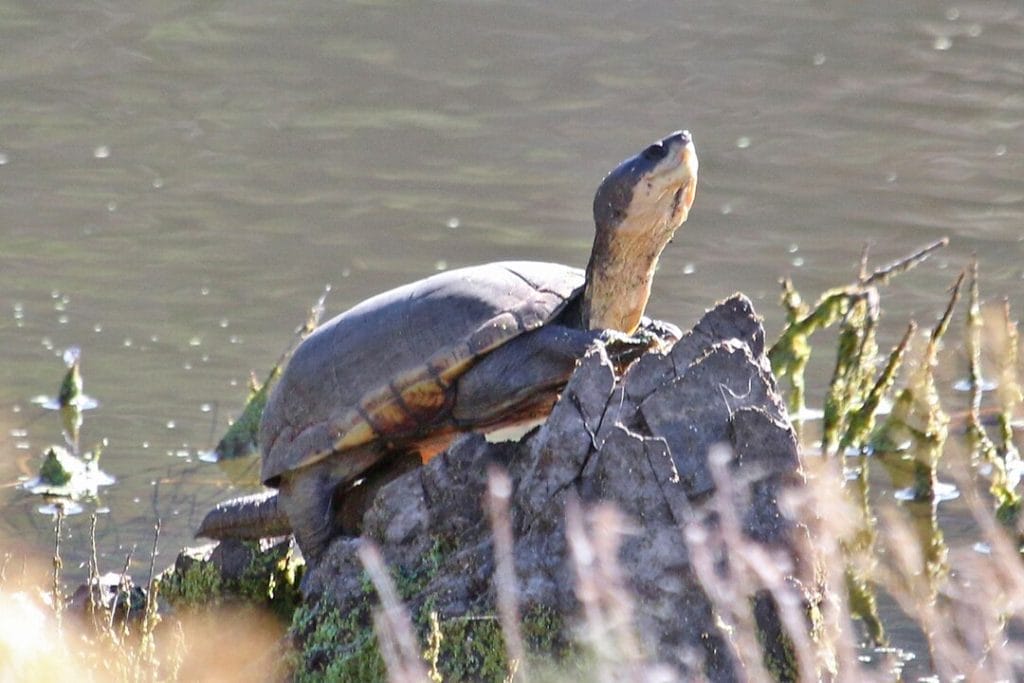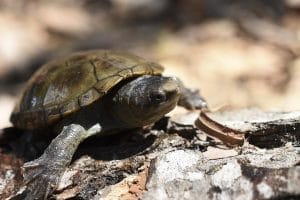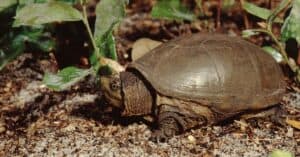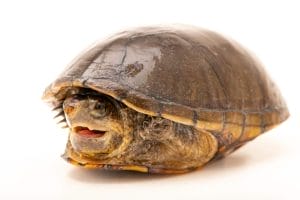Kinosternon stejnegeri (Arizona mud turtle)
Home > Turtle Database > Kinosternon stejnegeri (Arizona mud turtle)

The Arizona mud turtle (Kinosternon stejnegeri) is a small aquatic species found in the southwestern United States. Known for its adaptability, it thrives in arid regions, relying on seasonal water sources for survival.
Native Turtle Species Map – Find Turtles by Region
Scientific Classification
- Kingdom: Animalia
- Phylum: Chordata
- Class: Reptilia
- Order: Testudines
- Family: Kinosternidae
- Genus: Kinosternon
- Species: K. stejnegeri
Common Names
Arizona mud turtle
This Hilarious Turtle Book Might Know Your Pet Better Than You Do
Let’s be real—most turtle care guides feel like reading a textbook written by a sleep-deprived zookeeper.
This one’s not that.
Told from the snarky point of view of a grumpy, judgmental turtle, 21 Turtle Truths You’ll Never Read in a Care Guide is packed with sarcasm, sass, and surprisingly useful insights.
And hey—you don’t have to commit to the whole thing just yet.
Grab 2 free truths from the ebook and get a taste of what your turtle really thinks about your setup, your food choices, and that weird plastic palm tree.
It’s funny, it’s honest, and if you’ve ever owned a turtle who glares at you like you’re the problem—you’ll feel seen.
Identification
Description
The Arizona mud turtle has a dome-shaped carapace, usually olive to brown, with smooth edges. Its plastron is hinged, allowing partial closure for protection. Adults typically measure 4-6 inches in shell length.
Sexual Dimorphism
Males have longer tails and a concave plastron, while females feature a flat plastron and shorter tails.
Check more turtles from the Kinosternon genus
Native Origin and Distribution
Geographical Range
This species is native to Arizona, New Mexico, and northern Mexico. It is commonly found in the Gila River and other intermittent water systems within this region.
Preferred Habitat
The Arizona mud turtle inhabits rivers, ponds, and seasonal water bodies. It adapts to dry conditions by estivating in burrows during droughts.
Behavior
Feeding Habits
These turtles are omnivorous, feeding on aquatic invertebrates, small fish, carrion, and plant matter.
Predators
Predators include raccoons, birds, and large fish. Juveniles are particularly vulnerable to predation.
Reproduction
Breeding Season
Breeding typically occurs in spring and early summer, following seasonal rains.
Reproductive Method
Females lay 2-6 eggs per clutch in sandy or loamy soil near water sources. The eggs incubate for 2-3 months, with hatchlings emerging in late summer.
Conservation
Extinction Status
The Arizona mud turtle is listed as Least Concern by the IUCN.
Threats
Habitat loss, water pollution, and predation by invasive species are key threats to this species.
Conservation Measures
Efforts include habitat restoration, water quality management, and public awareness programs.
Economic Importance
While not significant in trade, the Arizona mud turtle contributes to local ecosystems by controlling invertebrate populations and cycling nutrients.
Interesting Facts
- This turtle can aestivate for months during dry seasons, conserving energy until water returns.
- Its hinged plastron provides additional defense against predators.
- Arizona mud turtles play a crucial role in seed dispersal by consuming aquatic plants.

About Author
Muntaseer Rahman started keeping pet turtles back in 2013. He also owns the largest Turtle & Tortoise Facebook community in Bangladesh. These days he is mostly active on Facebook.














